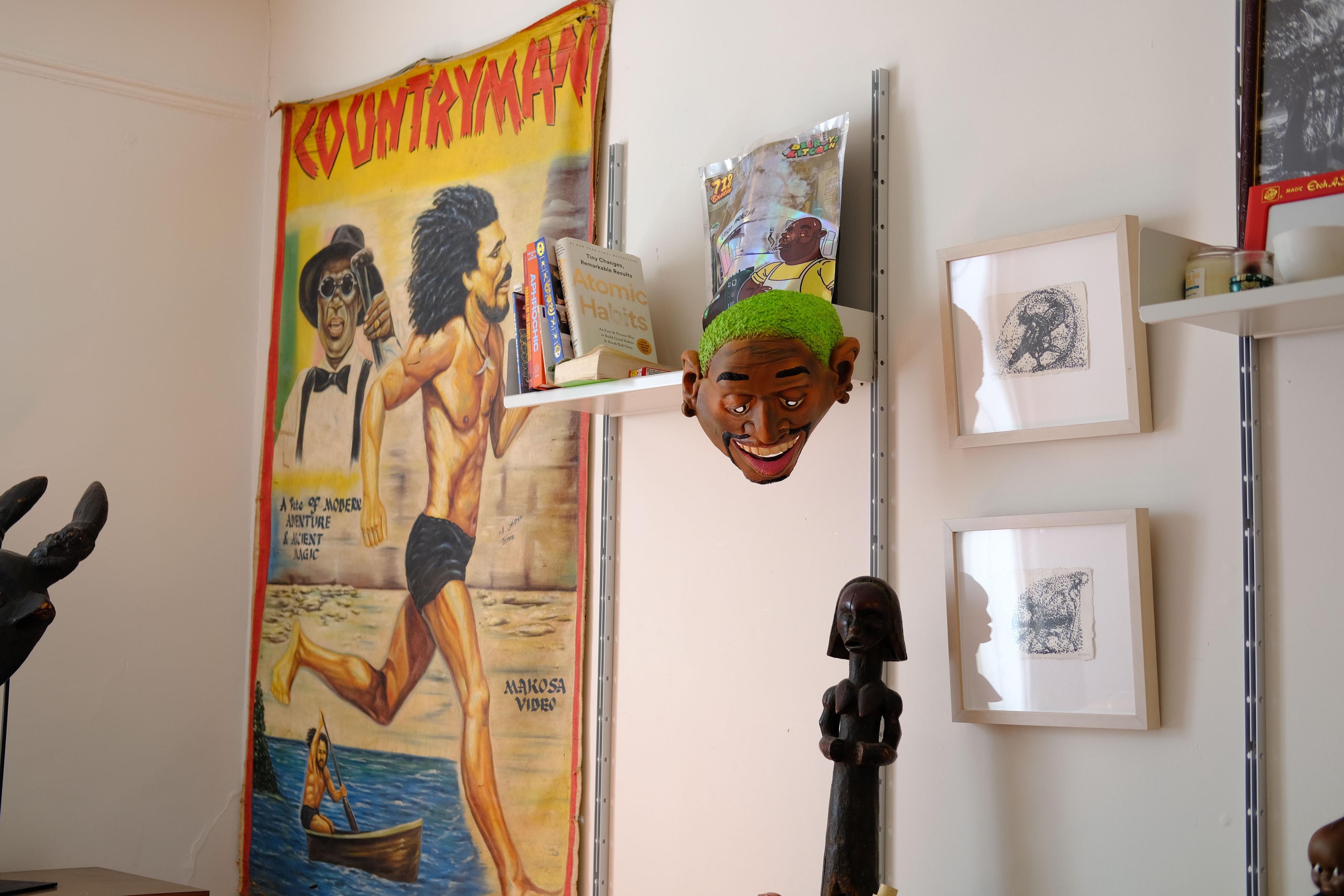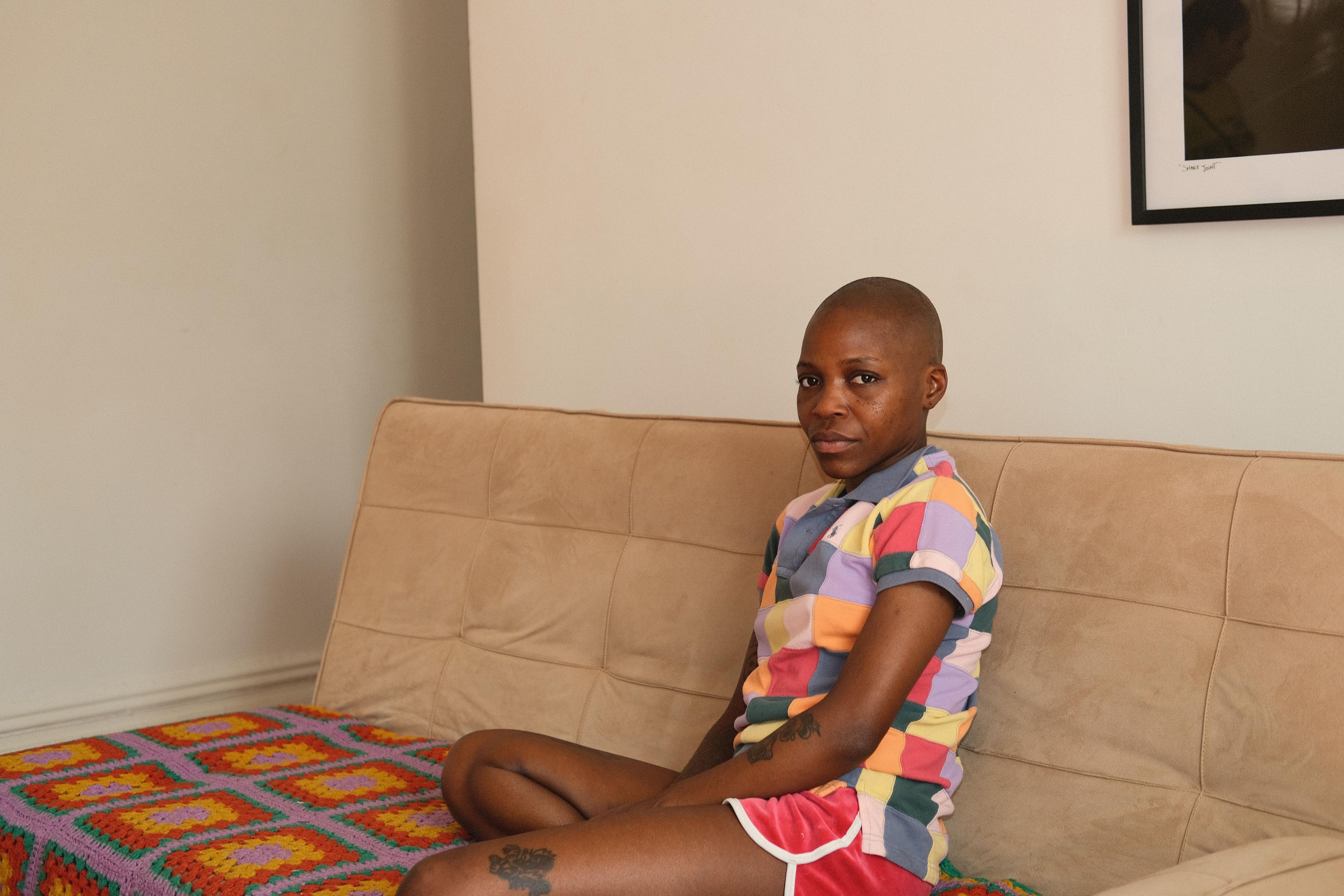
PROFILE
FOLK ART, JU-JITSU & EBAY DUMPS
Reclaiming Black Narratives with Melinda Griffith
Today, very few residents of Bedford-Stuyvesant can claim the neighborhood as their birthplace. Over the past 20 years, beautiful brownstones and (formerly) affordable housing prices have lured affluent young people to move in to the detriment of the autochthonous community that made this vibrant part of Brooklyn so appealing in the first place. Numerous real estate scams have plagued the district, Scandinavian-inspired coffee shops have popped up, and countless yoga moms can be seen pushing expensive strollers down the block; it’s easier to walk past a natural wine bar than an OG mom-and-pop shop. Yet, despite the aggressive gentrification, soaring rents, and an overall vibe shift, a vanguard of native artists, makers, and entrepreneurs is holding down the fort, keeping the eccentric spirit of Bed-Stuy—as it’s colloquially known—alive. One such resident is Melinda Griffith, a multifaceted folk artist of Guyanese heritage whose work spans multiple mediums like photography, graphic design, and sculpture.

The daughter of an avid collector, Melinda grew up in Bed-Stuy in a home where art, particularly African craft, was abundant, feeding her already fertile imagination. From an early age, her proclivity for arts and crafts was apparent, showing up in the form of outstanding drawing skills and her left-handedness—a quirk in the era she grew up in— a sign of her burgeoning artistic identity. Her education followed suit. From enrolling in a specialized art junior high school, where she learned how to put together a portfolio and critique a body of work, to choosing a photography major in college, Melinda’s trajectory was always geared toward creation. “There’s never been a start or finish,” she muses, lounging on a colorful crochet blanket covering her vintage couch, “I feel like I’ve just always been making things.”
Petite in stature—with a big personality—Melinda’s work draws upon a creative vernacular that’s undeniably New York. It’s a medley of hidden narratives found in the objects the rest of us might discard or overlook. From her excursions into eBay’s virtual flea markets to the clay sculptures she now molds in her living room, her practice explores the many nuances of Black identity through a process of reclamation, taking mass-produced objects like carnival prizes and kitchen decor and presenting them in a context where their historical—racist, if you will—baggage is dissected and reframed. “When these things are decontextualized, they visually don’t look that bad,” she explains. “And I think there’s lots of art that use the color black to represent Black skin, but the context is taken out.” This juxtaposition is at the heart of her research. Melinda has a particular fondness for items that reflect how Black bodies have been commodified, caricatured, and yet preserved in material culture. “The obsession was so real,” she says, marveling at the sheer volume of everyday items adorned with Black faces, from ashtrays to thimbles she discovers in her research. She finds it both darkly humorous and deeply compelling as if holding up a funhouse mirror to society’s complicated relationship with race.
Spawning from her past as a sneakerhead, her eBay hunts transcend surface-level collecting; they are a form of cultural archaeology. Her neatly organized apartment is proof of it. The pristine shelves displaying her collection are reminiscent of an impeccably thought-out gallery show rather than a messy hobbyist’s living room. In a world where minimalism reigns, Melinda is unabashedly a fan of clutter—curated clutter, as she calls it. “I love people with houses that seem like they have very little, but it still gives you a homey feeling,” she says, pointing to the many items adorning her space.
Drawn to items like a Black doll made under USSR rule and antique baby teethers made of pearl and sterling silver, not all of the vintage relics she finds during her deep dives become part of her owned assortment. She, however, will upload the most interesting ones to her Instagram in a series of themed posts dubbed “eBay Dump.”
Her passion and innate talent for finding rare objects have led to multiple people asking to help them track down specific vintage shirts. But Melinda is not interested, as the web is flooded with cheap, fake replicas that go against her curatorial and reusing principles.
When her hands are not busy molding clay into precious tiny sculptures, Melinda can be found in Lower Manhattan challenging both men and women at her favorite dojo.
Originally practicing Muay Thai, the Brooklynite stumbled onto jiu-jitsu by chance but has been religiously training ever since. “The gym where I was training was big enough to host two classes simultaneously, so I would see the grapplers wearing these beautiful white uniforms,” she recounts. “One day one of the coaches approached me and she encouraged me to try, using my stature as a latch.” Intrigued by the aesthetic appeal of the thick, embroidered gi worn by competitors, Melinda gave it a try. Fast-forward to today, she’s on the cusp of earning her blue belt and fantasizes about teaching children one day—she even designed a custom gi for Masterskya, her gym of choice.
It’s impossible to talk to Melinda without noticing her quintessential love for Brooklyn; it permeates her graphic design work, home décor, personal style, and even the people she collaborates with. A Bed-Stuy local through and through, she falters at the idea of moving away, especially if that entails picking another state in the U.S. “I don’t really like other states too much,” she says with a laugh. “If I leave New York, it will have to be out of the country, possibly on an island.”
In March 2024, Melinda participated in her first-ever group art show with a paper-mâché and clay bust named ‘Head of John Henry.’ More success soon followed the next month, as she exhibited at the Canada NY Art Gallery as part of a show called “Chrysalis” curated by Gabrielle Narcisse and Kendra Gourgue. Currently Fulton Street, her webshop labeled after the iconic street synonymous with Bed-Stuy—and yet another tribute to her beloved neighborhood—is almost entirely sold out.
Considering Melinda’s repertoire and versatile approach to craft, it’s hard to say which tools she will pick up next. However, one thing is certain: The history and cultural heritage of her native district will continue to inform whatever she does.